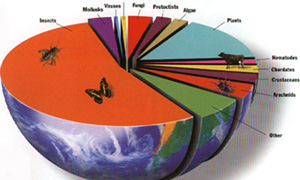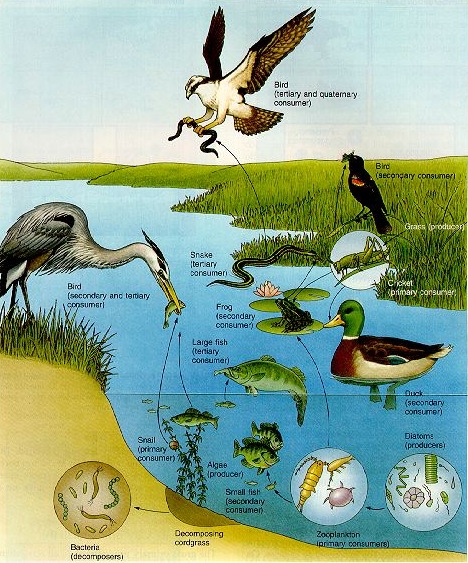10 Ecosystems and Human Domination
overview | vocabulary | outline | summary
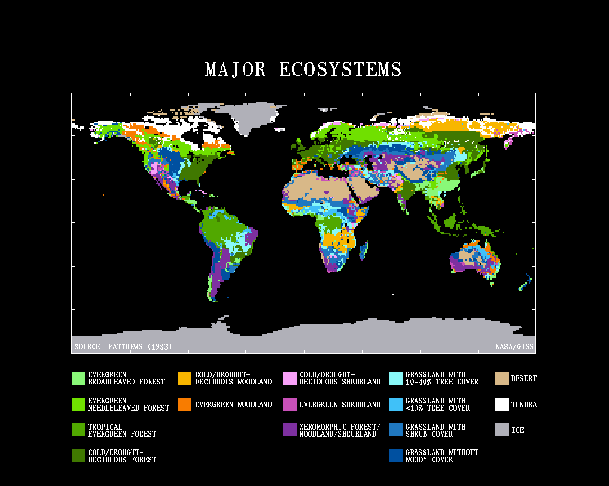
“ . . . understand very basic facts of Human existence.” p. 203
“The biosphere is now being profoundly reshaped by human society and the pace of that change now appears to be exceeding the highest rates seen in the last 65 million years . . . .”
p. 193
Vocabulary
Settings & biogeochemical nutrient sphere, place versus places, ecology,
oikios topos, ecological system, form & function, stress & compensation, ecological footprint,
Recovery rates, resilience, R vs K species, small versus large egg gambits,
Adaptive responses, maladaptive behavior, “rational actor model,” limits of rationality, fashion, framework, foundations,
keystone species, weak links, support mechanisms, NPP, net primary productivity, arable land, life support system.
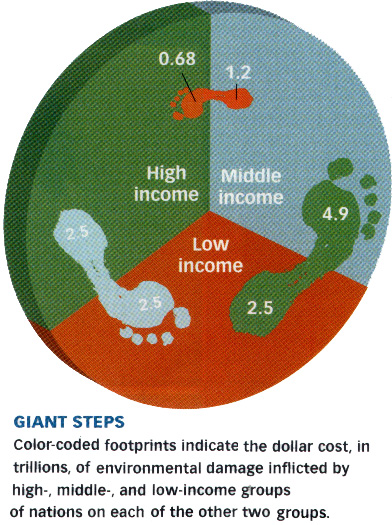 Click to enlarge the per capita wealth ecological footprint
Click to enlarge the per capita wealth ecological footprint
Outline
Opening arguments
The impacts that human settlements have on their surroundings, extended resource extraction areas and now the world's oceans, deserts, and even the air itself are the subject of the most debilitating denial in all of human existence.
Three basic assumptions in ecology as to the origins of wealth are not given a price by economic science.
a. Ecosystem concept (review)
b. Climax communities and perpetual change (succession) of vegetation.
c. The earth's life support systems
Ecosystem goods and ecosystem services
i. Soil erosion
ii. deforestation
Eight kinds of services from ecosystems:
- water
- generation of soils
- ocean flood protection
- natural pest control (and fertilization)
- ameliorates weather
- cycling of nutrients and waste disposal
- pollination of plants
- provisions tranquility and entertainment -
- nature watching
- hunting & fishing
The state of ecosystem services
Four serious service degradations:
inland waters' degraded (204)
ocean food fishery protection needed to forestall ongoing losses
Water supply gap reduces cycling of nutrients & waste disposal (205)
"Declining trends in the capacity of ecosystems to render pollutants harmless!" (205)
• keep nutrients in balance
• buffering against disaster
• chemicals that function as human hormones (205)
The three horseman of environmental impact
‘summarized in the I = PAT identity.’
Population times Affluence (wealth) times Technology
Total fertility rates, consumption, per capita GDP, and electricity use per capita and contraception all contribute to impacts. (see doubling rates). pp. 205-206.
1948 warning by William Voight:
"Human beings and the natural world are on a collision course."
206
| Today | Yesterday | When ? |
|---|---|---|
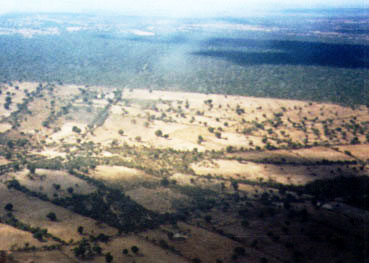 |
 |
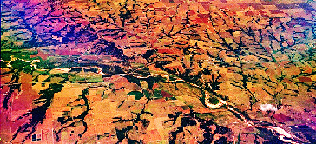 |
Deforestation in southern Africa. |
Texas farm in the Dust Bowl, 1930s. |
USA: the high plains where the water is scarce. |
![]() 1993 academic report they interpret as evidence for the opinion:
1993 academic report they interpret as evidence for the opinion:
“humanity may be ever more rapidly sawing off the branch (ecosystems) on which it is perched [culture]. . . .what lies behind . . . the unhappy outcomes they portend.”
p. 206
Community ecology as practiced by Tansely is Darwin’s tangled bank
“That community was the assemblage of plants and animals to which any disturbed are tended to return eventually . . . “
193
 “not only local areas but the entire planet is in a state of flux.”
(radiation & erosion, or plate tectonics,
volcanism, weather and climate, ocean circulation).
“not only local areas but the entire planet is in a state of flux.”
(radiation & erosion, or plate tectonics,
volcanism, weather and climate, ocean circulation).
194

“The magnitude of the effects of human actions on our life-support systems and the goods and services they supply can be visualized as the products of three factors, summarized in the I = PAT identity.”
Ehrlich & Ehrlich, p. 205.
"Declining trends in the capacity of ecosystems to render pollutants harmless, keep nutrient levels in balance, give protection from natural disasters, and control outbreaks of pests, diseases, and invasive organisms are apparent in many places."
p. 205.
Subject home | previous chapter | summary
Source on line: environmental science problem solving: http://ian.umces.edu/
